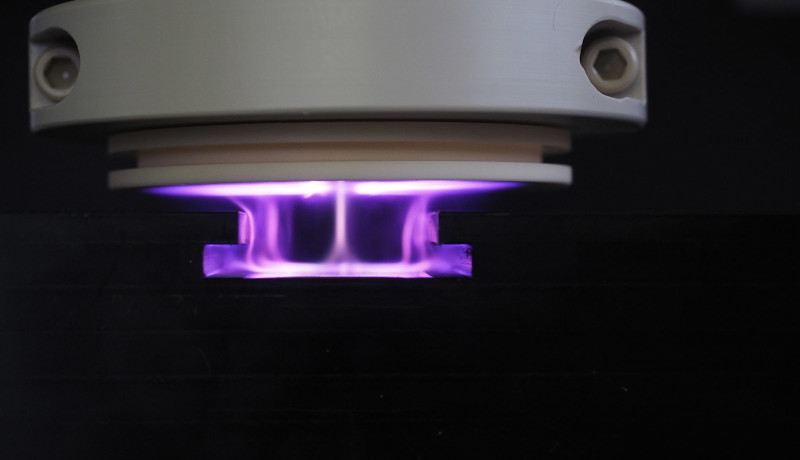Cold plasma for surface treatment
on

Plasmas occur naturally in the interior of stars – with us on earth, these electrically charged gas mixtures mainly occur in lightning discharges (ball lightning) or Aurora Borealis lights. However, using (intense) heat or very high voltages we can also generate plasmas in the laboratory. Researchers from the Fraunhofer Institute for Surface Engineering and Thin Films IST have now succeeded in producing cold plasmas that can be used for the surface treatment of temperature-sensitive materials. Using this, recesses in these surfaces are no longer a problem, thanks to a new technology: the Disc Jet can reach anywhere.
Plasmas have already been used for some time in industry to clean surfaces, so the materials such as paint or adhesives will stick better. The advantage is that no treatment with solvents is required – this saves money and is also more environmentally friendly. However, until recently there was the problem that only flat surfaces could be treated this way: the plasma simply slid over apertures, recesses and such like.
The researchers have now combined two different plasma processes: the plasma-jet and the glide discharge. Using this combination, three-dimensional surfaces can now be treated effectively. The trick behind the 'cold' plasma is that it is generated using an AC voltage. The (very high) voltage ensures that the electrons are knocked from their path around the nucleus; the heavier, positively charged nucleus remains. The gas becomes an electrical conductor – it has become a plasma. Because the electrodes are reversing polarity continuously, the 'heavy' ions move only a little back and forth and release very little energy in the form of heat. In this way the temperature of the plasma can be limited to 30...60 °C – ideal for the treatment of temperature sensitive plastics or wood.



Discussion (0 comments)